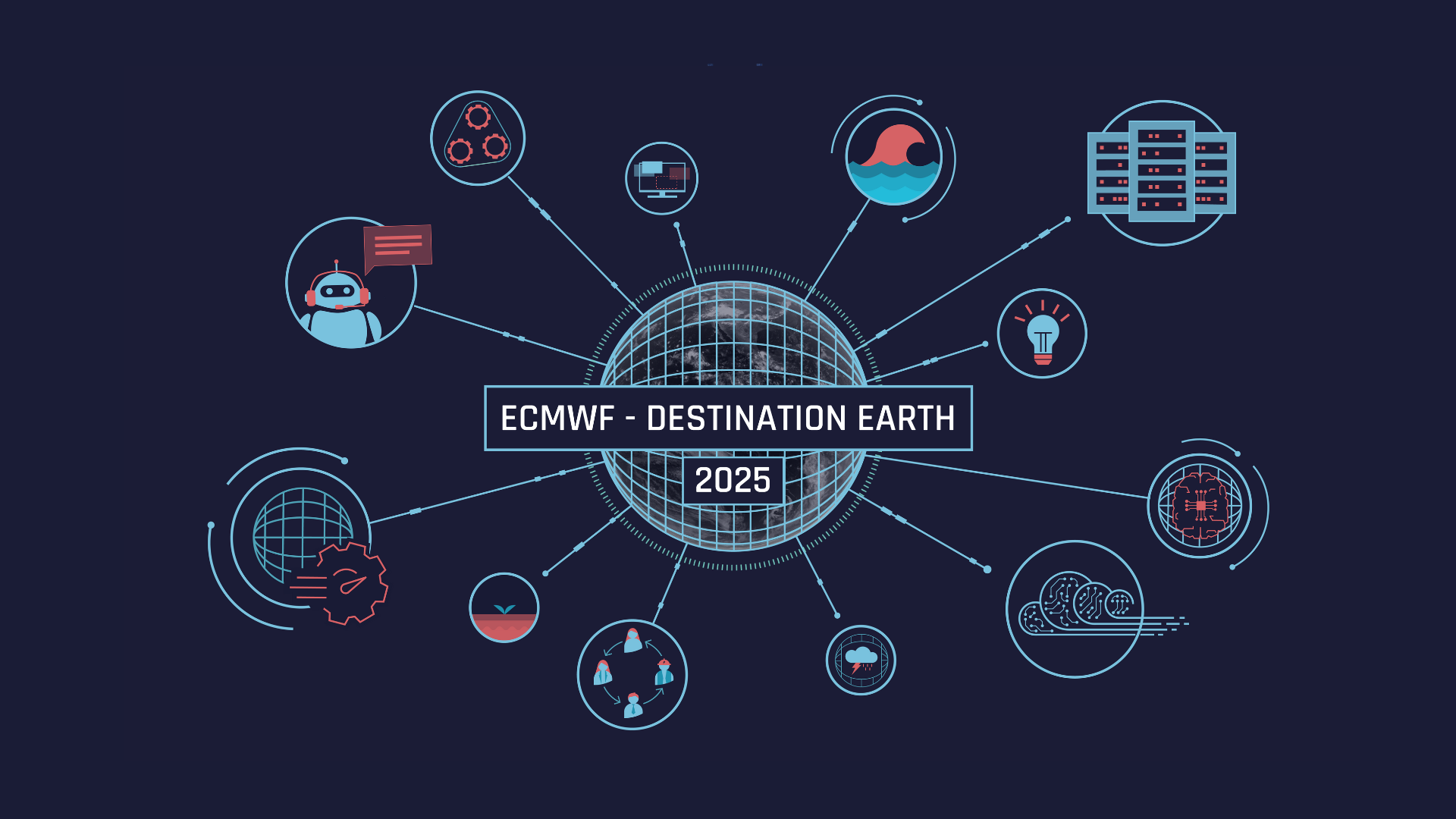
ECMWF is seeking contractors to develop an innovative demonstrator that will leverage Destination Earth’s capabilities to support the European Central Bank (ECB) in assessing climate-related risks both at global and regional levels, focusing on the agriculture sector. The insights generated by this demonstrator will help model the effects of climate hazards on agricultural productivity and food prices, preparing for potential future service developments across multiple sectors and applications.
The project emphasises co-design with ECB and ECMWF experts through dedicated workshops and stakeholder engagement. Read the call on ECMWF website.
Bridging climate science and financial stability
Climate change affects central banks’ core mandates, particularly price stability. The agricultural sector is particularly sensitive to climate and has very direct and immediate links with food prices —a key component of consumer price indices across Europe. Recent evidence demonstrates the scale of this challenge: Europe’s extreme summer heat in 2022 increased food inflation by 0.43–0.93 percentage points, with projections suggesting this figure could rise by 30–50% by 2035.
The new demonstrator will focus specifically on developing highly specialised climate risk indicators that capture how extreme weather events—including heatwaves, droughts, floods, and compound events—impact agricultural productivity and food prices. This proof of concept could pave the way for future service developments tailored to central banking needs across multiple sectors.
Harnessing DestinE’s Climate Digital Twin
The proposal shall demonstrate the added value of DestinE’s Climate Change Adaptation Digital Twin (Climate DT), which provides unprecedented capabilities for climate change adaptation planning. The Climate DT combines cutting-edge global Earth-system models, impact sector applications and observations into a unified framework to provide global climate projections and impact-sector information on multi-decadal timescales (1990 to ~2050), at very high spatial resolutions (5 to 10 km).
The demonstrator will exploit the Climate DT’s ability to generate storyline simulations of extreme weather events under different climate conditions. These simulations enable exploration of “what if” scenarios and the potential impacts on agricultural production and food prices under future warming scenarios.
Climate risk indicators for agriculture
The selected contractor will develop a demonstrator dataset of climate risk indicators for agriculture, including baseline and future scenarios based on Climate DT projections up to 2050. The format of the dataset will be co-developed with ECB experts and should include agriculture-specific climate risk indicators that go beyond standard weather metrics. These climate risk indicators for agriculture will integrate high-resolution climate data with regional sectoral data, remote sensing information, and socio-economic layers to capture sector-specific vulnerabilities.
The development of physical risk indicators and scenarios should be based on peer-reviewed methodologies and build upon analyses conducted under related contracts implemented by ECMWF. The approach must address both hazard and vulnerability dimensions of climate risks, tailored to the ECB’s needs for integrating physical climate risks into financial stability assessments and central banking risk management.
Supporting the NGFS
Beyond the ECB, this work aims to support the Network of Central Banks and Supervisors for Greening the Financial System (NGFS) in advancing physical risk assessment capacities. By showcasing how high-resolution, sector-specific climate impact indicators can enhance understanding of physical risks, the demonstrator can help NGFS members refine climate stress testing frameworks and support more robust financial system resilience planning.
Read the call on ECMWF website.
Destination Earth is a European Union-funded initiative launched in 2022, with the aim to build a digital replica of the Earth system by 2030. The initiative is being jointly implemented under the leadership of DG CNECT by three entrusted entities: the European Centre for Medium-Range Weather Forecasts (ECMWF), responsible for the creation of the first two ‘digital twins’ and the ‘Digital Twin Engine’, the European Space Agency (ESA) responsible for building the ‘Core Service Platform’, and the European Organisation for the Exploitation of Meteorological Satellites (EUMETSAT), responsible for the creation of the ‘Data Lake’.
We acknowledge the EuroHPC Joint Undertaking for awarding this project strategic access to the EuroHPC supercomputers LUMI, hosted by CSC (Finland), and the LUMI consortium, Marenostrum5, hosted by BSC (Spain) Leonardo, hosted by Cineca (Italy) and MeluXina, hosted by LuxProvide (Luxembourg) through a EuroHPC Special Access call.
More information about Destination Earth is on the Destination Earth website and the EU Commission website.
For more information about ECMWF’s role visit ecmwf.int/DestinE
For any questions related to the role of ECMWF in Destination Earth, please use the following email links:


